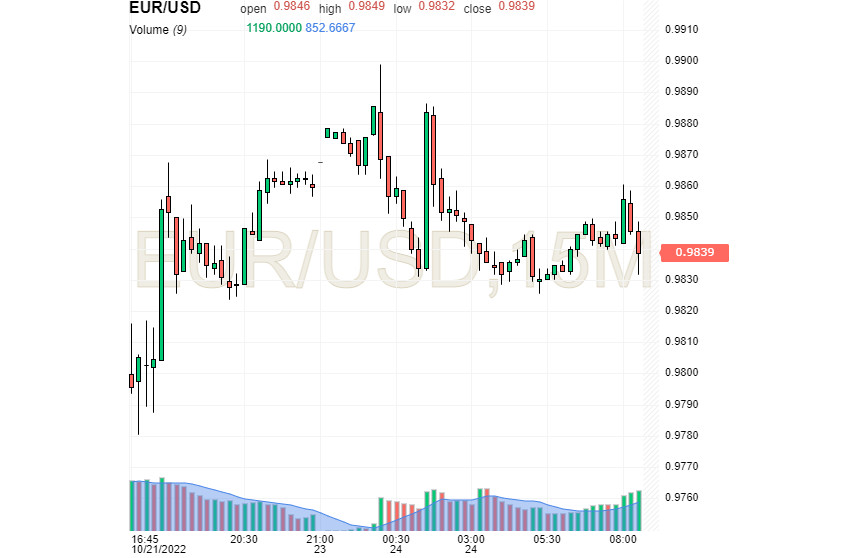

The US dollar and the euro opened the week amid a mixed fundamental background. The euro is still under pressure from geopolitical tensions and the energy crisis, while the greenback risks getting into a so-called intervention loop.
According to analysts at Nordea Bank, currency interventions carried out in the global market "may dampen the strengthening of USD in the short to medium term." For your reference, FX interventions are done by the countries that seek to prop up their currencies against the US dollar. However, this scenario is very unlikely as most countries do not have "an endless amount of USD at disposal to sell."
Nordea Bank is sure that such interventions will fail when the supply of US dollars in these countries runs dry. FX interventions involve selling US Treasuries which adds upward pressure on key rates and leads to a stronger US dollar. Experts warn that this intervention loop may turn out to be negative for the greenback as it could lead to "dollar overshooting." Yet, even this potential failure of USD will not support the euro as it is likely to face a new sell-off wave in the near future. This is quite logical as EUR/USD has been trading within the downtrend since late September 2022. The pair is currently staying in the range of 0.9500 –1.0000. As the geopolitical and economic situation in the EU is getting worse, the euro is set to decline to the lower boundary of this range at 0.9500.
At the moment, the euro/dollar pair looks stable although the euro is still depreciating against the dollar. Early on Monday, October 24, EUR/USD was hovering near 0.9839, trying to maintain the balance. The triangle pattern formed after the breakout of the resistance at 1.0000 may become the main catalyst that will push the pair up to the level of 1.0250.

The greenback opened this week with another advance that has become typical for the currency. At the same time, records showed that the number of long positions opened by large market players decreased by the end of the previous week after a 3-week rally. However, the number of long positions opened by hedgers remained unchanged. This indicates persistent market uncertainty and low risk sentiment among market participants.
Experts stress that financial conditions have been worsening for several weeks now. However, the limit of monetary tightening has not been reached yet. Therefore, the Fed will have to pursue its policy of aggressive rate hikes. Against this backdrop, the stock market tumbled. All measures taken by the Fed are aimed at combating inflation. Most investors expect the US regulator to raise the rate further. It is estimated that the Fed's rate will peak at 5% by May 2023. If so, financial conditions will naturally deteriorate, analysts warn.
According to some forecasts, US inflation may reach 4% to 5% in the next 4-8 months. Then, a slowdown may follow. But even so, the US central bank is unlikely to ease its policy. Instead, it could slow down the pace of rate increase. There is an opinion that inflation in the US is caused by transitory factors in contrast to other countries. The situation is believed to improve soon. If this is true then the Fed may focus on economic growth and lower the rate. So, there is a chance that by 2024, the key rate will decline to 4.5–5%.